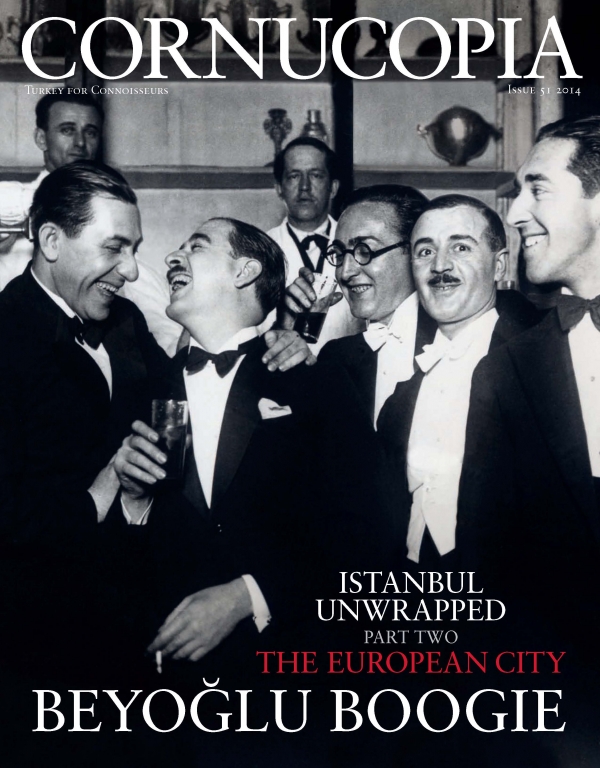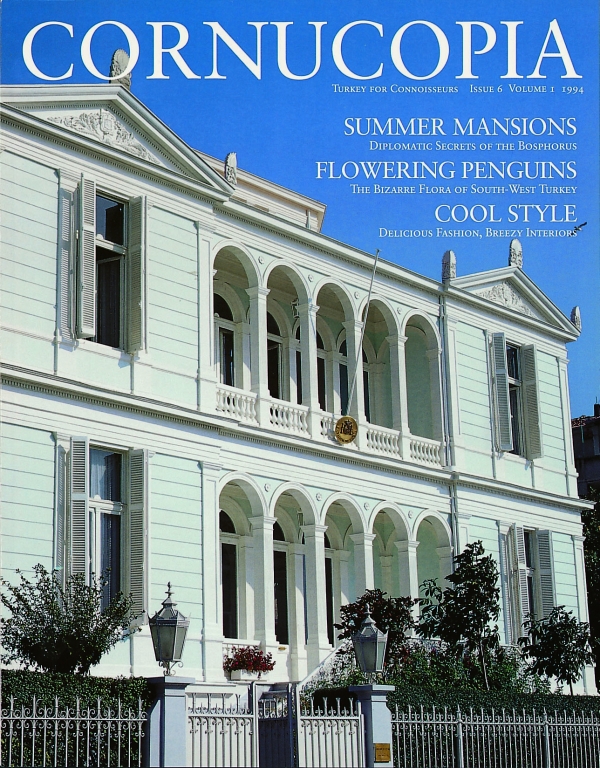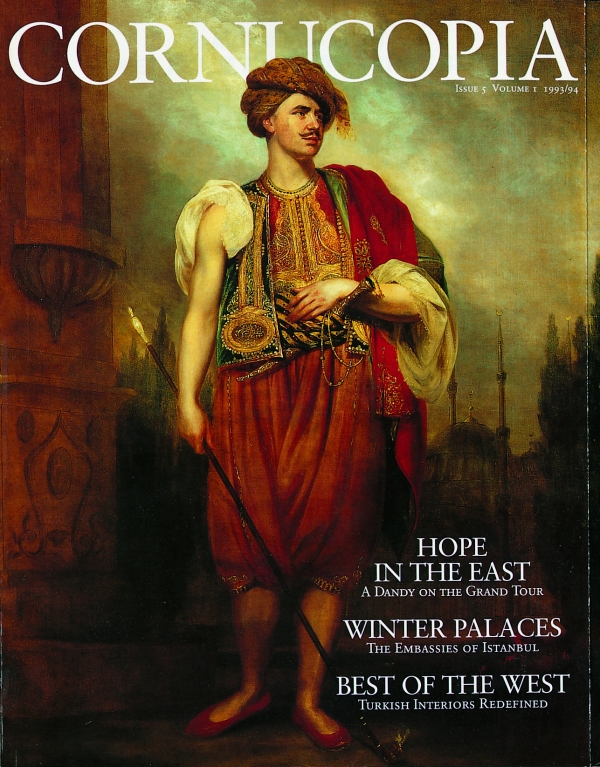Buy or gift a stand-alone digital subscription and get unlimited access to dozens of back issues for just £18.99 / $18.99 a year.
Please register at www.exacteditions.com/digital/cornucopia with your subscriber account number or contact subscriptions@cornucopia.net
Buy a digital subscription Go to the Digital EditionThe dusty rooms of a crumbling Istanbul palazzo are a living museum of the plaster-caster’s art. Berrin Torolsan visits the heir to a fine tradition. Photographs by Fritz von der Schulnburg
One of the oldest cities in the world, Istanbul is a labyrinth and a battleground of architectural styles, Genoese, Byzantine, Ottoman, Levantine and pre- and post-war European buildings jostle for attention. One narrow side street meanders into another or suddenly stops dead in a cul-de-sac full of architectural surprises heaped one on top of the other.
This cornucopian quality is at its most intense on the left back of the Golden Horn. Above the tall, glass-faced office buildings lining the quayside still stands the medieval Genoese tower, built in 1267. Radiating from it are streets lined with tall, fin-de-siecle townhouses of wealthy Greek, Jewish and Armenian merchants. Next to the remains of the old Italian colony’s city walls, is a massive Moorish mosque, built in the 1300s, with a most unusual tower as its minaret. It has been restored many times, most recently in 1913, when a street fountain was added in purest Art Nouveau…
The world’s first metro, the Tünel, climbs the steep hill from the quayside to Pera. In the 18th and 19th centuries European ministers built their embassies here on both sides of a long, narrow avenue, the Grand’ Rue de Pera, alongside their churches and cathedrals, Art Nouveau apartment blocks and theatres and cinemas. Later came Art Deco shopping arcades.
Next to the Tünel station, the cypress trees of a 15th-century Mevlevi dervish convent mask the bell tower of Christ Church, the Crimean memorial church, built in rustic Gothic style by George Street, architect of the Law Courts in London.
A steep lane drops behind this little corner of England to the district of Tophane, the Ottoman Arsenal. In Boğazkesen, a street leading down past Tom Tom Kaptan and the residence of the Italian ambassador, you will find a certain arched doorway. It gives nothing away. Push it open and step onto a terrace. On one side is a wilderness that must once have been a formal garden, now dominated by a giant wisteria and home to dogs and chickens. On the other is the dilapidated façade of the neo-Renaissance palazzo known as St Eugène.
Built on land granted by the Sultan to the French Soeurs de la Charité, St Eugène served as an orphanage from 1868 until 1937. Today it remains under French protection and houses the workshop of İbrahim Kemal Çimbiz.
Kemal Cimbiz is a plaster-caster. He is 60 now but clearly remembers the day when his father, a modest shopkeeper in Tophane, first brought him here to learn a craft. As Turkish custom goes, when a boy is given over to be an apprentice, the parents tell the master, ‘His flesh is yours, the bones are ours’, indicating that the master has full authority over the novice and is responsible for his education and good behaviour. Kemal’s master was a kindly Armenian plaster-caster by the name of Garabet Cezarliyan, whose family had been responsible for setting alight the blaze of styles on Istanbul’s façades.
He spoke four languages and was a patient man. ‘Forget about beating,’ Kemal Cimbiz says. ‘He never said a cross word.’
Kemal was skilled and obedient and proved quick to learn. He became like a son to Cezarliyan and worked with him until the end of his life. When his master died in 1982, Kemal inherited the workshop and himself became a master of decorative sculpture…
William Morris and Mariano Fortuny familiarlised the West with the sumptuous floral designs of Ottoman textiles. But few are aware of the the bolder side of Turkish design
The intoxicating scent of attar of roses, the oil distilled from the petals of damask roses, has worked its magic on men and women for centuries. Martyn Rix traces the history of the damask rose from its roots in Neolithic times and travels to Isparta in southwest Anatolia to see how these precious petals yield up a liquid worth its weight in gold
Few travellers to Turkey enjoying the hedonistic delights of Mediterranean cruising venture east of Antalya, capital of Anatolia’s Turquoise Coast – intimidated perhaps by rumours of a wild hinterland that even Alexander the Great found hard to tame. But those who dare to leave the crowds behind will discover an awe-inspiring landscape of cliffs that drop sheer to the sea, epic castles and remote Byzantine retreats. Kate Clow and Jacqueline de Gier joined ten other guests and a lecturer for a twelve-day voyage of enlightenment aboard a traditional gulet
Geoffrey Lewis, acknowledged as the dean of Turkish studies in Britain and beyond, learned the language while serving in the RAF in Egypt. When he finally visited Turkey, he was smitten for good. By Andrew Mango. Portrait by Charles Hopkinson
For more than thirty years Terence Mitford and George Bean painstakingly identified and recorded the forgotten ancient sites of Turkey’s Aegean and southern shores. Their contribution to the preservation of the country’s archaeological heritage is incalculable, their guidebooks are legendary, yet the men themselves are unsung. Barnaby Rogerson, in this homage to his heroes, uncovers an extraordinary pair: a gentle giant and a man of steel
A new book on Vassilaki Kargopoulo: Photographer to His Majesty the Sultan. By Philip Mansel
Dedicated to Venus by the Romans, no other fruit has so many symbolic and material associations with sensual beauty. Lovely soft pink flowers are followed by crimson velvetly fruit, soft and round, with a heavenly taste and aroma.
More cookery features




Cornucopia works in partnership with the digital publishing platform Exact Editions to offer individual and institutional subscribers unlimited access to a searchable archive of fascinating back issues and every newly published issue. The digital edition of Cornucopia is available cross-platform on web, iOS and Android and offers a comprehensive search function, allowing the title’s cultural content to be delved into at the touch of a button.
Digital Subscription: £18.99 / $18.99 (1 year)
Subscribe now